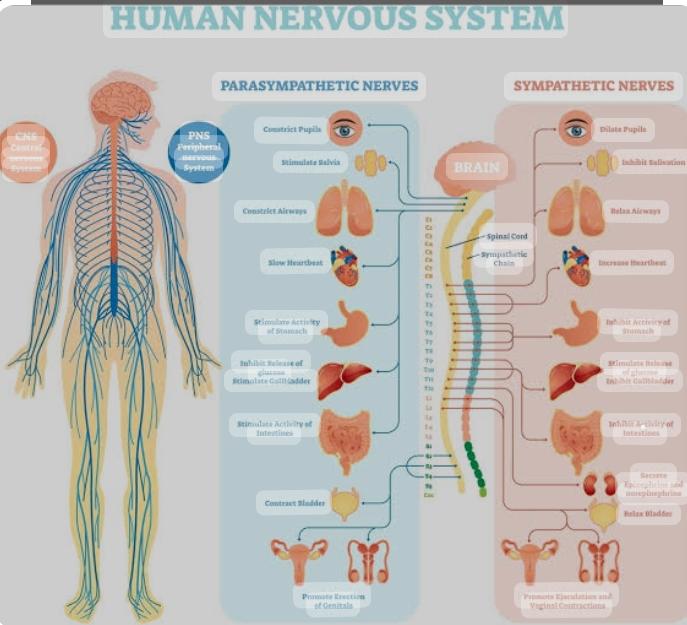Her is detailed about Basic Anatomy and all important concepts in written form to understand Anatomy.
What are Anatomy and Physiology?
Anatomy: the word anatomy is derived from a Greek word
“Anatome” means to cut up. It is the study of structures that
make up the body and how those structures relate to each
other.
The study of anatomy includes many sub-specialties. These
are Gross anatomy, Microscopic anatomy, Developmental
anatomy and Embryology.
Gross anatomy studies body structure without a microscope.
Systemic anatomy studies the functional relationships of organs
within a system whereas Regional anatomy studies body part
regionally. Both systemic and regional approaches may be
used to study gross anatomy
Microscopic anatomy (Histology) requires the use of
microscope to study tissues that form the various organs of
the body.
Physiology:
the word physiology is derived from a Greek word
for the study of nature. It is the study of how the body and its parts
work or function.
Human Anatomy and Physiology
Homeostasis
When structure and function are coordinated the body
achieves a relative stability of its internal environment called
homeostasis / staying the same. Although the external
environmental changes constantly, the internal environment of
a healthy body remains the same within normal limits.
Under normal conditions, homeostasis is maintained by
adaptive mechanisms ranging from the control center in the brain
to chemical substances called hormones that are secreted by
various organs directly into the bloodstream. Some of the
functions controlled by homeostasis mechanisms are blood
pressure, body temperature, breathing, and heart rate.
Level of structural organization of the body
The human body has different structural levels of
organization, starting with atoms molecules, and compounds
and increasing in size and complexity to cells, tissues, organs
and the systems that make up the complete organism.
Human Anatomy and Physiology
Atoms molecules and compounds: –
At its simplest level, the body is composed of atoms. The most common elements in living organisms are carbon, hydrogen, oxygen, nitrogen phosphorus, and sulfur.
Atoms → Molecule → Compounds.
Cell:
The smallest independent units of life. All life depends
on the many chemical activities of cells. Some of the basic
functions of cells are growth, metabolism, irritability, and
reproduction.
Tissue:
tissue is made up of many similar cells that perform a
specific function. The various tissues of the body are divided
into four groups. These are epithelial, connective, nervous, and muscle tissue.
Epithelial tissue: –
Found in the outer layer of skin, the lining of organs, blood and lymph vessels, and body cavities.
Connective tissue: –
Connects and supports most parts of the body. They constitute most of the skin, bone, and tendons.
Muscle tissue: –
Moves its ability to contract. This constitutes skeletal, smooth, and cardiac muscles.
Nerve tissue: –
Found in the brain, spinal cord, and nerves. It responds to various types of stimuli and transmits nerve impulses.
Organ: –
Is an integrated collection of two or more kinds of tissue that work together to perform a specific function. For example: The stomach is made of all types of tissues
System:
Is a group of organs that work together to perform major functions. For example: The respiratory system contains several organs.
Organism level: –
The various organs of the body form the entire organism.
Anatomical Terminologies
The language of anatomy will probably be unfamiliar to you at
first. But once you have understood the basic word roots,
combining word forms, prefixes, and suffixes you will find that
anatomical terminologies are not as difficult as you first
imagined.
Anatomical Position.
Anatomical positions are universally accepted as the starting
points for positional references to the body. In anatomical
position the subject is standing erect and facing the observer,
the feet are together, and the arms are hanging at the sides
with the palms facing forward.
Relative Directional terms
Standardized terms of reference are used when anatomists
describe the location of the body part. Relative means the
location of one part of the body is always described concerning another part of the body
Body parts Regions
The body can generally be described as having areas of:
Axial body part:
– It is the part of the body near the axis of the body. This includes the head, neck, thorax (chest), abdomen,
and pelvis.
Appendicular body part: –
It is the part of the body out of the axis line. This includes the upper and lower extremities. It is customary to subdivide the abdominal area into nine regions or more easily into four quadrants.
Body planes and sections
Body planes are imaginary surfaces or plane lines that divide
the body into sections. This helps for further identification of specific areas.
Sagittal plane:
– divides the body into right and left halfs.
– Mid sagittal plane: –
divides the body into equal left and right halves.
– Para sagittal plane: –
divides the body into unequal left and right
Frontal plane: –
divides the body into the asymmetrical anterior and posterior sections.
Transverse plane: –
divides the body into upper and lower body sections.
Oblique plane: –
divides the body obliquely into upper and lower sections.
Body Cavities
The cavities of the body house the internal organs, which
commonly referred to as the viscera. The two main body
cavities are the larger ventral (anterior) and the smaller, dorsal
(posterior) body cavity.
The ventral body cavity constitutes the thoracic cavity and
the abdominopelvic body cavity.
The Thoracic cavity houses the lung and heart. It is protected by
the rib cage & associated musculature and the sternum
anteriorly. It consists of the right and left pleural cavities and
mediastinum (the portion of tissues and organs that separates
the left and right lung).
The abdominopelvic cavity extends from the diaphragm inferior
to the floor of the pelvis. It is divided into the superior abdominal
and inferior pelvic cavity by an imaginary line passing at the upper
pelvis.
The abdominal cavity contains the stomach, intestine, liver, spleen and gallbladder.
The pelvic cavity contains the urinary bladder, rectum, and
portions of the reproductive organs.
The dorsal body cavity: it constitutes the cephalic cavity
containing the brain and the vertebral canal containing the spinal
cord.
Also visit Biology and Basic Anatomy Notes MCQs

